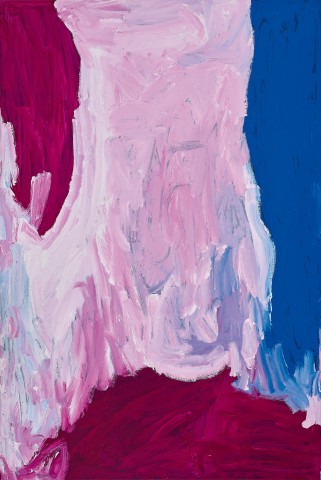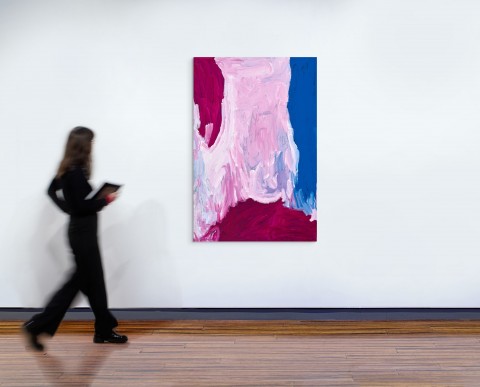(c.1924 - 2015)
Mirdidingkingathi Juwarnda Sally Gabori
Dibirdibi Country, 2011
synthetic polymer paint on linen
Mornington Island Arts and Craft, Mornington Island, Queensland (stamped verso)
Alcaston Gallery, Melbourne
Private collection, Sydney, acquired from the above
Mirdidingkingathi Juwarnda Sally Gabori’s paintings are a tribute to the country on Bentinck Island, a small sparsely vegetated rise of land in the southern Gulf of Carpentaria where she grew up living off the natural abundance of the surrounding ocean and estuaries in the traditions of the Kaiadilt. In 1948, following a series of natural disasters, Gabori along with the other inhabitants of Bentinck Island, were forced to relocate to Gununa on nearby Mornington Island.
Gabori began her art career late in life, aged 85, however, unlike many other Aboriginal language groups, the Kaiadilt did not have a tradition of mark making – whether on tools, objects or bark. Taking this cultural background into consideration, Gabori’s style is completely self-made, conjured from maps in her mind of Bentick Island and the country she loved. Judith Ryan, former curator at the National Gallery of Victoria compares her immense innovation and star power to that of similar late-starters, Emily Kame Kngwarreye and Lorna Fencer Napurrula.1 From Gabori’s earliest works, she has depicted aspects of her own beloved country as well as that of her brother, father and husband – including both geographical aspects of the landscape as well as the wildlife, specifically sea-life which is central to the landscape.2
Dibirdibi country, 2011 represents a subject painted more frequently by the artist than any other. It offers a powerful recollection of the country of her husband, Kabarrarjingathi Bulthuku Pat Gabori – a rival of her brother King Alfred, and whose relationship with Gabori created intense friction within Kaiadilt society, eventually resulting in her sibling’s death.3 The painting recalls the country of her husband and the Rock Cod Ancestor, depicting the big mangrove swamp on the edge of a large saltpan that covers part of her husband’s country close to the site where the liver of Dibirdibi, the Rock Cod Ancestor, was thrown into the sea, creating a permanent fresh water well.
Although known primarily for her brightly coloured palette and intuitive, boldly executed brushstrokes, Gabori’s depictions of Dibirdibi are also nevertheless multilayered in their meaning. She is at once painting the saltpans of the land, the Rock Cod Ancestor Dreaming of Dibirdibi country, a portrait of her late husband in connection to his country, and finally, her own longing, loss and memory.
1. Ryan, J., ‘Broken Colour and Unbounded Space’, in Mirdidingkingathi Juwarnda Sally Gabori: dulka warngiid: Land of All, Queensland Art Gallery I Gallery of Modern Art, Brisbane, 2016, pp. 33 – 34
2. Pinchbeck, C., ‘Mirdidingkingathi Juwarnda Sally Gabori’ in undisclosed: 2nd National Indigenous Art Triennial, National Gallery of Australia, Canberra, 2012, p. 64
3. McLean, B., ‘Dulka Warngiid; The Whole World’ in Mirdidingkingathi Juwarnda Sally Gabori Dulka Warngiid; Land of All, op. cit., p. 16
CRISPIN GUTTERIDGE

